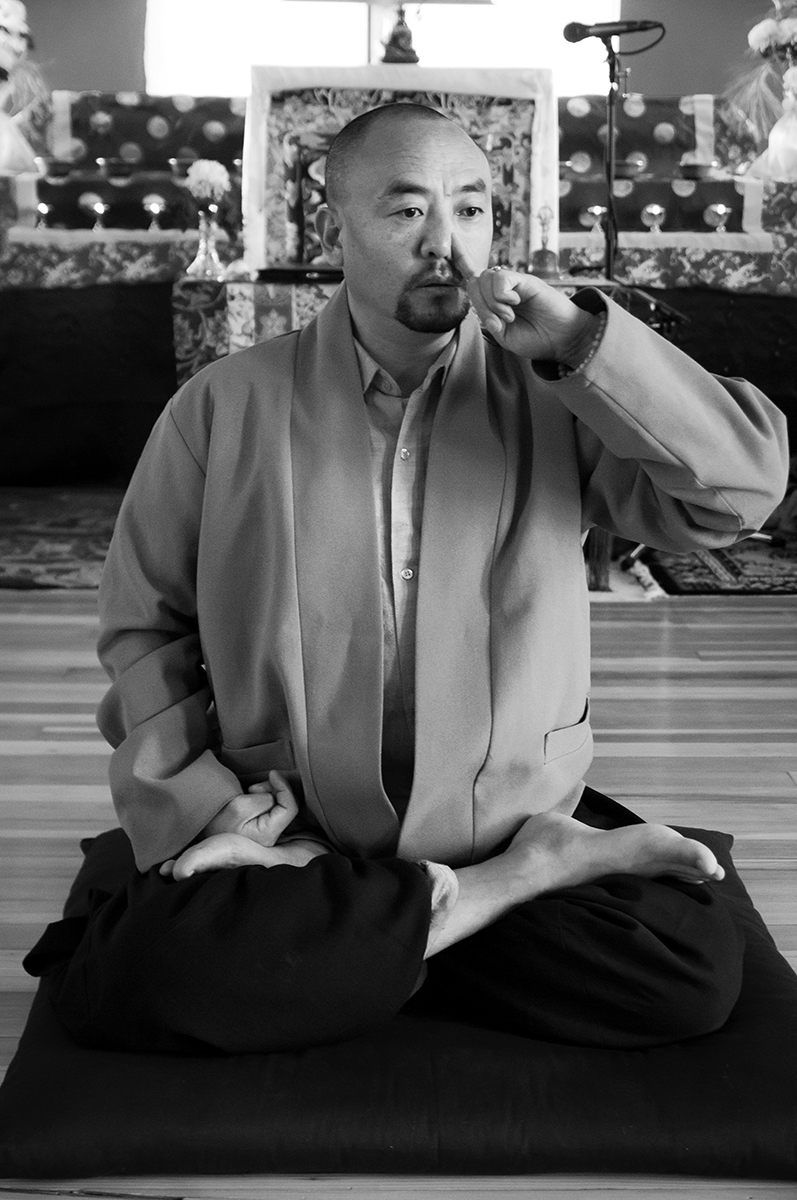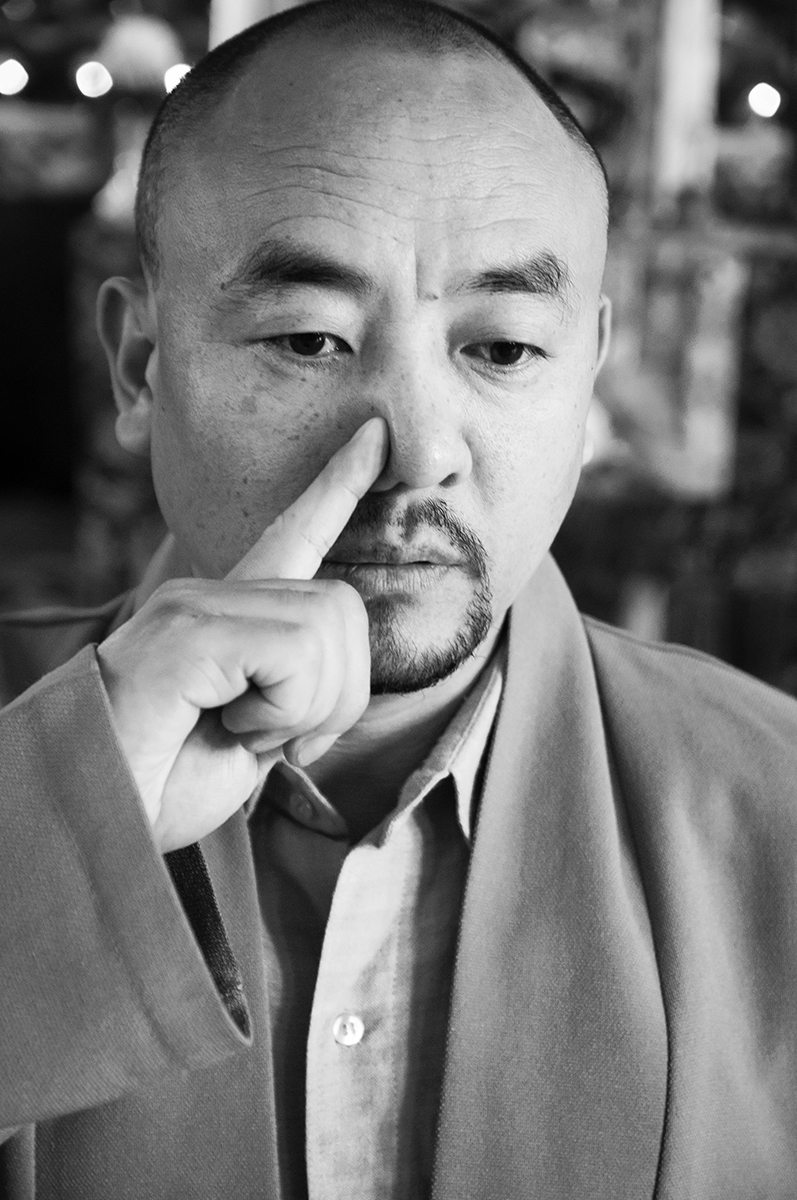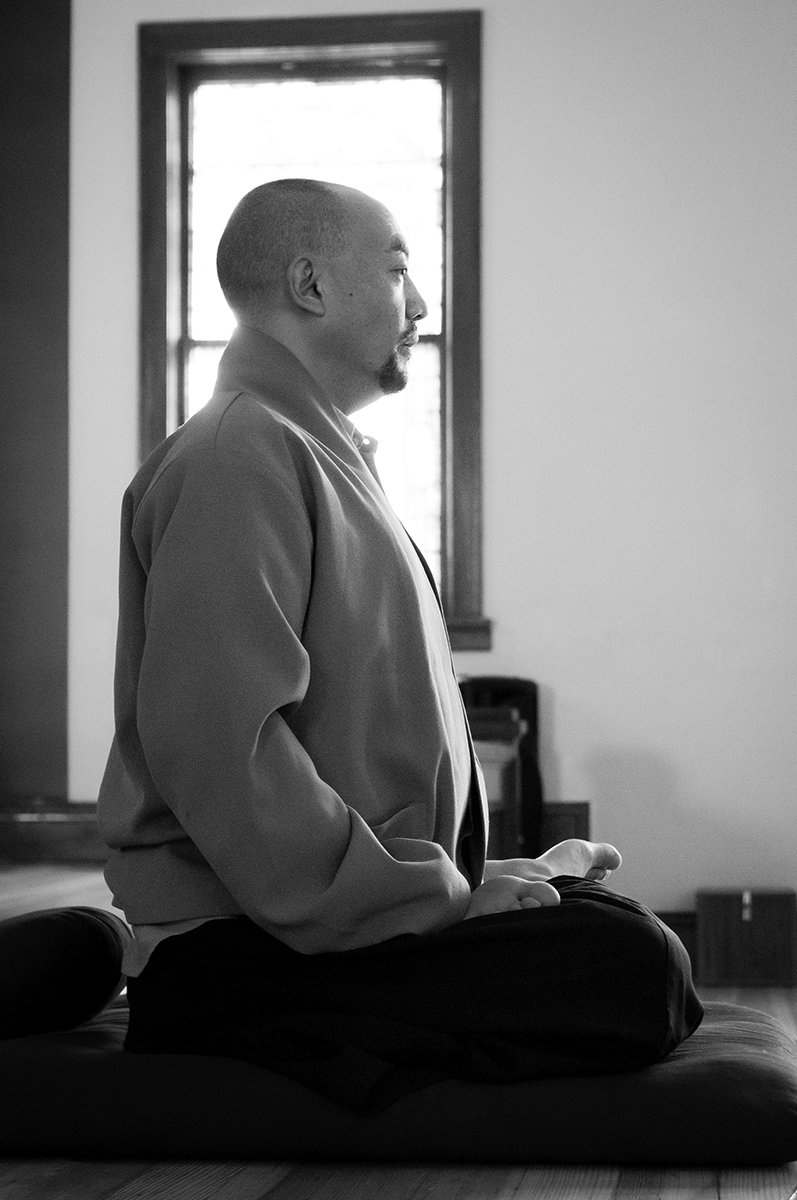In the Tibetan Buddhist teachings, the element of air and the breath are tied together through the word lung (Tib., rlung), which is embedded with several layers of meaning. Lung describes not only the breath, the movement of air we call wind, and the basic atmosphere around us, but it has the additional meaning of “wind energy.”
We may think of the breath as something that is simply related to the exchange of oxygen and carbon dioxide and that keeps us alive. However, wind energy not only supports our ordinary bodily systems but also quite literally drives our emotions. Thus, it is more than simply the experience of inhalation and exhalation. Wind energy is also the physical rush of energy that accompanies all of our feelings and sensations. If we examine the body and mind carefully, we notice a connection between the breath and how we feel. When the breath is calm and relaxed, we notice that the body’s energy is also calm, especially in the areas of the abdomen, lungs, and chest. As a result, the mind becomes clear and we feel relaxed and even-tempered.
When putting things in the context of wind energy, all of these emotions are simply an expression of imbalanced wind energy. And in every single case the mind can be thoroughly pacified and calmed through working with the breath. Of course, change will not happen immediately. But generally speaking, over a long period of time, working with the breath is effective at cutting through all types of neurotic tendencies, because it brings the wind energy into balance.
Related: Tibetan Medicine: Ancient Wisdom for Modern Health and Healing
In the Tibetan Buddhist tradition, we call this style of practice wind energy training or the purification of wind energy. We call the broad tradition of purifying and working with the wind energy Yantra yoga. Some traditions of Yantra yoga also include complementary asanas, or physical poses and postures. While these asanas cannot be practiced by everyone, since every person has different physical capabilities, wind energy training can be practiced by anyone, at any moment, regardless of age or physical condition.
Yoga of the Wind
Physical posture belongs to the category of outer yoga. The type of yoga we are learning here, the yoga of the wind, is called inner yoga. Inner refers to the subtle or more profound nature of this yoga, as compared with the more general nature of outer yoga.
Each of the seven aspects of the physical outer yoga—the Seven-Point Posture of Vairocana—is linked to the five root types of wind energy. These are five main types of wind energy found in the body.

The Lower Winds
The wind energy that abides in the area above the genitals, the “secret area,” is called the lower winds, one of the five root wind energies. These winds perform the function of excretion. When we sit in the full lotus posture of outer yoga, the lower wind naturally enters the central channel. Sitting in sattva posture [hero posture, sometimes called half lotus] supports this process as well.
The Winds in the Abdomen
Another of the five root wind energies, the winds that aid digestion are found in the lower abdomen. When the belly pokes out, this relaxes the wind that is abiding in the lower abdomen so that the digestive winds naturally enter the central channel. Many people in the West have the habit of hunching over. The reason for this is that we are raised sitting in chairs or sofas, rather than sitting on the floor as is taught in many Asian cultures. When we sit, we often either bend over or lean back on something. Slouching compacts the abdomen, which closes the belly, restricts breathing, and improperly curves the spine. This means that based on our habitual postures, the central channel remains closed.
The Life-Force Wind
In the heart center resides another of the root wind energies, the wind that “holds” the life force. The most important of all the wind energies and known as the root of all the winds, the life-force wind is what keeps us alive. Keeping the spine straight as an arrow enables the wind energy in the heart center to enter the central channel. This brings us to another instruction, which points out the necessity of keeping the spine straight like a hawk in its nest. When hawks sit in their nests, they raise their bodies up in a regal posture. We, too, should not only straighten the spine but also feel almost as though the head is being pulled up from above. This not only aids the wind energy in the heart center in entering the central channel but also wakes us up and gives the mind a light, joyous feeling.
When we are mindful of our posture, focusing on the Seven-Point Posture of Vairocana, then the wind in the secret place above the genital area, the wind in the belly, and the wind in the heart center will naturally enter the central channel. With these details in mind, we can begin to appreciate the necessity of having a skillful teacher. If the wind energy does not properly enter the central channel, but instead comes up into the chest area and mixes with the wind abiding there, mental or physical illness can develop.
The Upward-Moving Wind
Slightly tucking the chin toward the chest causes a natural downward bend in the neck. This aspect of the posture is related to the fourth of the root wind energies, the upward-moving wind, which naturally abides in the throat. Because of this detail of the posture, the upward-moving wind enters the central channel.
The All-Pervasive Wind Energy
The last of the root wind energies, the all-pervasive wind energy abides between the skin and the flesh, covering the entire body underneath the skin. Moving the shoulders back and wide like the wings of a vulture helps us sit completely motionless. Sitting motionless helps the all-pervasive wind energy enter the central channel.
Mastering the Winds
The sixth point is not related to any specific aspect of the posture or to one specific root wind energy. We have just learned that when we sit and incorporate the first five points of the Seven-Point Posture of Vairocana, the five root wind energies will enter the central channel. This is called binding or mastering the wind. When we bind the root winds, the 21,000 winds, which give rise to the afflictive emotions, naturally enter the central channel. Thus, this posture binds the winds of the afflictive emotions.
Seeing Nonconceptual Wisdom
The seventh point of this practice incorporates both the aspects of touching the tongue to the top of the mouth and that of eyes open and gazing along the top of the nose. When the tongue touches the top of the mouth, the jaw naturally drops down and creates space in the mouth. Through the lens of Tibetan Buddhism, this, combined with open eyes, enables us to see the nature of nonconceptual wisdom. When we meditate, it is essential that our eyes be open!
Practicing Yoga of Wind and Mind
Wind energy practice is best done early in the morning before we have eaten. Even if we do not practice in the early morning, we should allow our food to digest for an hour or two before we start to practice. After practicing physical yoga for 15 to 20 minutes, we sit down in the Seven-Point Posture.
This breath work can be the gateway to our sitting practice. We can use it once daily or each time we sit down to practice. It is called the Nine Cycles of Inhalation and Exhalation.
The nine cycles are broken up into three groups of three breaths. The first six sets of inhalations and exhalations are done using alternating nostrils. The mouth remains closed the entire time and we breathe only through the nose. As a general note, the teachings on wind energy training and Yantra Yoga emphasize breathing through the nostrils during the entire practice session.
Unless we are given specific, personal instruction by a master on how and when to breathe through the mouth, we should always breathe through the nose when we practice wind energy training.
Exercise: The Nine Cycles of Inhalation and Exhalation
Begin by taking a soft inhale, pressing the left nostril closed with the left index finger, and exhaling through the right nostril. Next, inhale through the right nostril, and then switch sides: the left index finger releases the left nostril while the right index finger closes the right nostril. Then, exhale through the left nostril, inhale through the left nostril, and continue as before, alternating nostrils. Each inhalation/exhalation through a single nostril counts as one set. Thus, what was just described were two of the nine cycles or sets of breathing. We repeat this until we have inhaled and exhaled a total of six times—three through each nostril. Finally, we take three sets of inhalation and exhalation through both nostrils.

As general advice for how the breathing should be done during this exercise, the exhalation is a little strong, but it should be long and relaxed. Continue exhaling until the breath completely dissolves, and then inhale again, also in a very elongated and relaxed manner. Always breathe as deeply as possible, pulling the breath down into the abdomen, and trying to feel it pervade the entire body. Since we are working with abdominal, and not thoracic, breathing, be sure that the chest and shoulders do not rise with the breath, and that only the belly expands.
Exercise: Visualization in the Nine Cycles of Inhalation and Exhalation
The nine cycles of breathing can be complemented with a visualization practice. In the beginning, you may wish to just become comfortable with the actual breathing practice taught above.
Before starting, you can either visualize that in the space above your head there is pure, clean, unobstructed energy, or, if you are a practicing Buddhist, you can visualize an array of wisdom beings. Regardless of your level of experience or specific religious or spiritual beliefs, this simple visualization can be used by any practitioner.
Related: Himalayan Buddhist Art 101: Wisdom Deities and Meditation Deities
To practice visualization, begin by inhaling softly and then making the first exhalation through the right nostril. Think of dispelling the afflicted mind of anger out with the breath. When exhaling through the right nostril, we send out masculine energy, ash-colored and in the form of snakes, which are symbolic of anger.
We should also think to ourselves that we are sending out all impurity, obstacles, and sources of illnesses.
Next, inhaling through the right nostril, we take in either the pristine, pure energy visualized in the space above us or the blessings of the wisdom beings visualized above. Engaged focus and concentration are very important when working with visualization because they allow us to feel that we are actually being filled with pure energy and blessings. Next, we exhale through the left nostril, this time sending out feminine energy, the afflicted mind of desire. We see the breath as being red in color, in the form of roosters, which is symbolic of desire. We also think to ourselves that we are sending out obstacles and illnesses that are related to a lack of warmth in the body. These are illnesses that cause wounds and sores on the body as well as back and joint pain. We repeat this pattern of white/right and red/left as just described, for three sets of inhalation and exhalation from each nostril, for a total of six sets.
Finally, breathing through both nostrils, we receive pure energy and blessings, and then send the breath out through both nostrils, thinking we are sending out the afflicted mind of ignorance,
the antithesis of wisdom. We see the breath like dark smoke in the shape of pigs, which are symbolic of ignorance. We think to ourselves that we are dispelling all illnesses in general that are related to imbalances in the wind energy. We also dispel all faults, nonvirtue, and obstacles, which have manifested as impure channels and wind in the body. We do this a total of three times, making a total of nine sets of inhalations and exhalations.

Suggested Daily Practice for Wind Energy Training
A typical session is structured like this:
Begin with a short session of physical yoga. Practice for about 15 to 20 minutes, or however long you wish. Then take your seat on a cushion. Take a moment to reflect on your motivation, making sure that the wish to practice for the benefit of all beings is present in the mind. Next, engage in the Nine-Cycles Breathing to dispel the karmic wind.
The Tibetan Buddhist teachings say that whenever we sit on the cushion to practice, we sit in two kinds of solitude. First, the body is to be in solitude—meaning we should be in a relaxed environment without distractions. Second, the mind is in solitude—that is, quiet and focused. Be aware of this when you choose the time and place to develop your practice.
♦
From The Tibetan Yoga of Breath by Anyen Rinpoche and Allison Choying Zangmo © 2013 by Anyen Rinpoche and Allison Choying Zangmo. Reprinted in arrangement with Shambhala Publications, Inc. Boulder, CO.